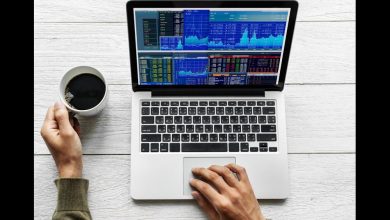Measuring Risk in Copy-Based Strategies: What Metrics Go Beyond Returns

In the world of modern investing, data is everywhere, but not all of it tells the full story. As more retail traders enter the markets through intuitive tools like a copy trading platform, many are tempted to chase high returns without fully understanding the risks those returns may conceal.
Copy trading offers a unique entry point for beginners and time-starved investors alike. It allows users to automatically mirror the trades of more experienced participants, making investment decisions feel seamless, even effortless. But herein lies a subtle danger: performance metrics on these platforms often highlight profits while downplaying the intricacies of risk.
To become a smarter trader, or copier, it’s essential to look past the surface. Here’s a deep dive into the metrics that matter and why risk-adjusted thinking is your most valuable asset.
The Problem with Chasing Performance Alone
It’s human nature to chase what looks successful. When browsing copy trading platforms, most users are drawn to profiles boasting the highest returns or win rates. But this creates a dangerous bias: high performance isn’t always sustainable, and it rarely tells the full story.
A trader might post 100% gains in a month, but was it due to skill, or excessive risk? Did they use 100x leverage? Were their trades highly correlated with volatile news cycles? Without proper context, following them is like driving a car by only watching the speedometer.
Blindly following return metrics also encourages short-termism. Many users hop between top performers, forgetting that consistent long-term performance is far rarer, and often less flashy.
Beyond Returns: The Metrics That Reveal Risk
So, what should traders and investors be looking at instead? Let’s break down some of the most important, and often overlooked, indicators that signal risk in a copy trading strategy.
1. Drawdown
Drawdown measures the peak-to-trough decline in an account’s balance over time. For example, if a trader grows an account from $10,000 to $12,000 but then drops to $9,000 before recovering, the drawdown is 25%.
Why it matters: A trader may show a net profit, but massive drawdowns along the way mean high risk exposure. Large drawdowns are psychologically tough and may signal poor risk management.
2. Sharpe Ratio
The Sharpe ratio compares returns to the volatility (or standard deviation) of those returns. Higher Sharpe ratios suggest more return for each unit of risk taken.
Why it matters: A high return with high volatility may not be as attractive as a slightly lower return achieved more consistently.
3. Sortino Ratio
Similar to Sharpe, but it focuses only on downside volatility. That is, it penalizes only the bad volatility (losses), not upside fluctuations.
Why it matters: Gives a clearer picture of the risk of loss specifically, not just general price swings.
4. Win/Loss Ratio (with Average Profit/Loss)
It’s not just how many trades win vs. lose, but how big the wins are relative to the losses. A trader who wins 70% of the time but has small wins and massive losses can be more dangerous than one with fewer wins but tight stop-loss discipline.
Why it matters: High win rates are seductive, but only valuable when paired with consistent profit-to-loss ratios.
5. Risk Per Trade
This metric shows how much capital is at risk per individual trade relative to the total account size.
Why it matters: Traders risking more than 2-3% of their capital on a single trade are typically taking on excessive exposure.
6. Trade Frequency & Holding Periods
Are you copying a high-frequency scalper or a long-term swing trader? The style matters, especially if the strategy doesn’t match your tolerance or account size.
Why it matters: Some strategies demand constant monitoring and tight spreads. Others need patience. Following the wrong style can lead to slippage, losses, or even emotional burnout.
The Role of Transparency
Quality copy trading platforms make a point to include these metrics, or at least offer tools to calculate them. But transparency isn’t universal. Some platforms showcase return percentages prominently while burying risk data under layers of charts.
Users should demand transparency not just in numbers, but also in methodology. How is drawdown calculated? Are returns net of fees? Is slippage or market impact accounted for?
Understanding the limitations of platform data can prevent dangerous assumptions. It’s also a reminder that the best strategy isn’t always the most profitable, it’s often the most transparent.
Regulation and Investor Protection
Copy trading exists in a regulatory grey area in many countries. Some jurisdictions treat it as discretionary portfolio management, while others classify it as signal-following or social media advice.
This uncertainty means users must be extra vigilant. The U.S. Commodity Futures Trading Commission (CFTC) has warned about unregulated signal providers and managed account schemes. According to the CFTC, users should assess whether traders are incentivized properly, whether risks are disclosed, and whether there’s meaningful oversight.
Even in regulated platforms, risk disclosures can vary widely. Some platforms require strategy providers to disclose methodologies, while others offer only performance numbers. As always, the burden ultimately falls on the user to vet what’s under the hood.
What Smart Copiers Do Differently

Investors who succeed with copy-based strategies tend to share a few habits:
- They read between the numbers. They know a 150% return means little if paired with 70% drawdowns.
- They match strategy to personality. A passive investor shouldn’t follow a high-frequency news trader.
- They monitor continuously. Copying isn’t set-it-and-forget-it. Market conditions change, and so should the strategies followed.
- They diversify. Copying multiple traders with uncorrelated styles helps smooth returns and reduce portfolio-level risk.
- They use demo accounts. Many platforms offer simulated trading to observe strategies before committing real money.
Copy trading isn’t passive investing. It’s outsourced decision-making that still requires active due diligence.
How Platforms Can Help
Reputable platforms are stepping up by providing detailed metrics, trader verification, historical backtests, and transparent pricing. Some also include educational features explaining what each metric means and how to interpret it.
Look for platforms that:
- Show time-weighted returns, not just cumulative gains
- Display risk-adjusted ratios like Sharpe or Sortino
- Allow filtering by drawdown, volatility, or trade style
- Offer notifications when a trader’s risk profile changes
- Allow easy exit or adjustment of copied trades
As more users become aware of risk-adjusted thinking, platforms will need to compete on quality of information, not just eye-catching ROI numbers.
The allure of copy trading lies in its simplicity: follow someone who knows what they’re doing, and (hopefully) profit. But in finance, simplicity can be deceptive.
High returns without context are like headlines without articles. To protect your capital, and your confidence, you need to dig deeper.
Metrics like drawdown, Sharpe ratio, and trade consistency tell a more honest story than monthly gains ever will. Whether you’re using a copy trading platform or exploring multiple providers, your focus should always be on risk literacy first.
In the end, performance matters, but sustainable performance matters more. And that begins not with copying others blindly, but with seeing the full picture clearly.




